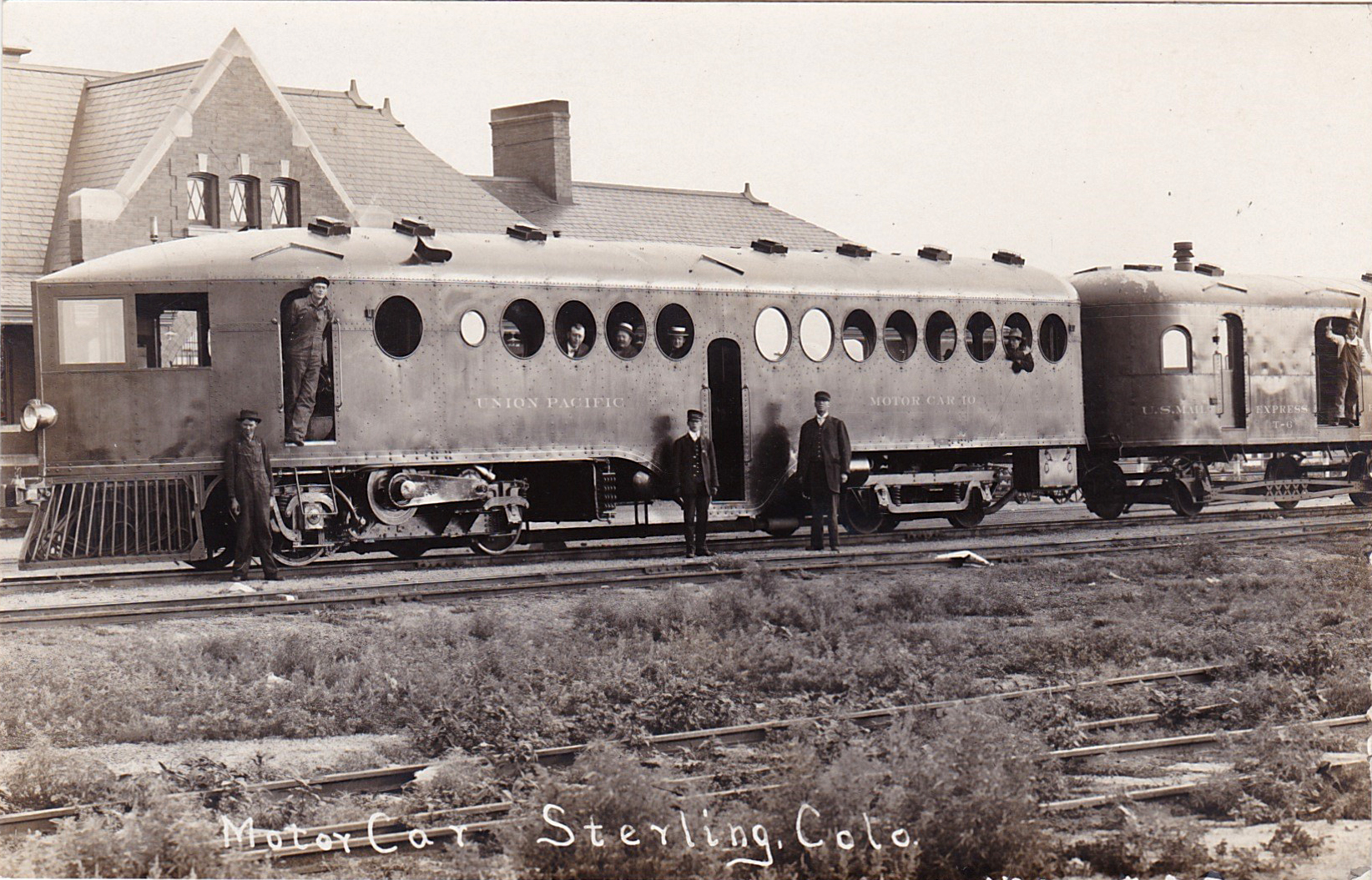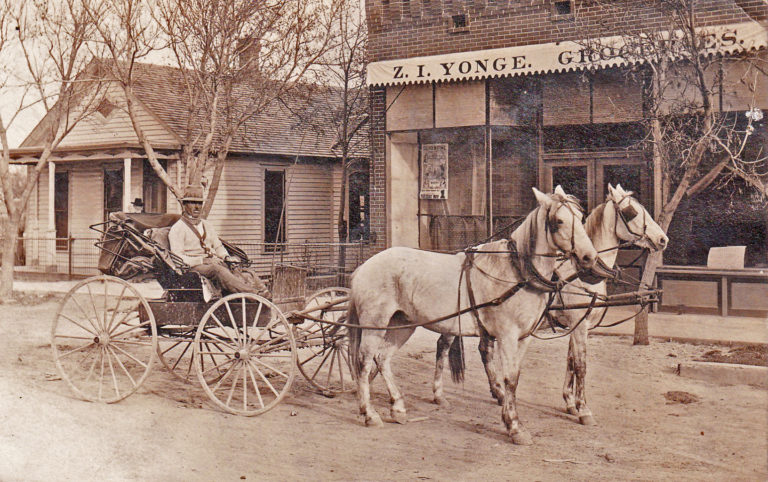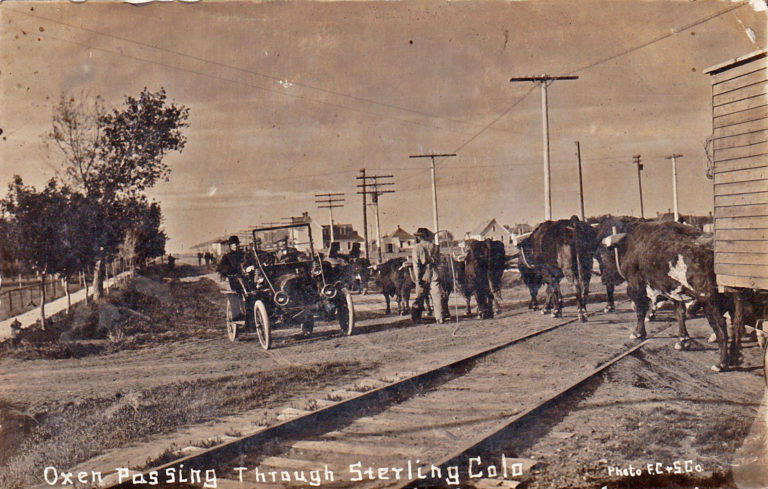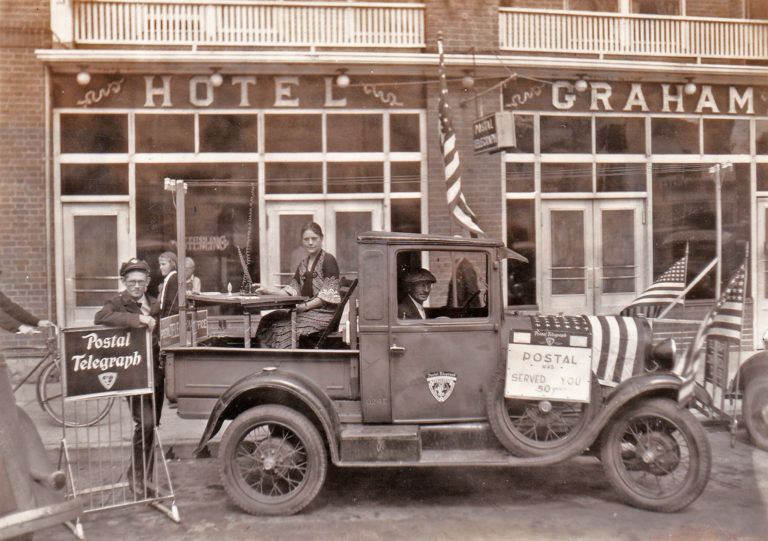The McKeen motor car was developed by William Riley McKeen, Jr., who was born in Indiana in 1869. McKeen was a graduate of Rose Polytechnic Institute and John Hopkins University, and did follow-up study at a technical university in Berlin. Following his education, he served apprenticeships in the mechanical shops of the Pittsburgh, Cincinnati, Chicago and St. Louis Railway in Columbus, Ohio. He then moved to the position of master car builder for the Terre Haute and Indianapolis Railroad. In 1898, he began working for Union Pacific, first serving as a district foreman at North Platte, Nebraska, then as master mechanic of their Wyoming division. In 1902, he was promoted to Superintendent of Motor Power and Machinery for Union Pacific in Omaha, Nebraska. At the behest of Union Pacific executive Edward H. Harriman, McKeen led work to design what would become the McKeen motor car.
McKeen’s car was envisioned as an inexpensive form of rail transport, ideal for suburban and branch line passenger (and to a lesser extent, freight) service. It was designed to pull one or two cars, which, as indicated in the photo, could include U.S. mail cars. It was powered by a transversely-mounted gasoline internal combustion engine located at the front of the car. McKeen touted the economic advantage of a gasoline engine, asserting that ”a locomotive requires 14 tons of fuel and 7,000 gallons of water while the McKeen car, to run the same distance, needs only 50 gallons of gasoline.”
The first McKeen car was built in 1905. By 1908, the demand for the car was great enough that the McKeen Motor Car Company, with McKeen as president and backed by Harriman, was formed in Omaha with $1,000,000 in capital. The McKeen car resembled an inverted boat — the “windsplitter” front end, rounded tail and porthole windows gave the McKeen an exotic, original look.
Approximately 150 McKeen cars were built between 1905 and 1917, when production of new cars was stopped. By this point, McKeen motor cars were operating on several U.S. railroads and others had been exported for use in Canada, Cuba, Australia and Mexico. There were a number of causes for the curtailment of production: 1) McKeen sales were largely directed to Harriman’s railroads; the world outside of Harriman’s wasn’t buying them in nearly the quantities necessary to ensure commercial survival; this was especially so after Harriman’s death in 1909, which took much of the magic out of the McKeen name. 2) McKeen’s stubbornness in refusing to take action in the face of complaints about high maintenance costs and low reliability; 3) McKeen’s persistence in manufacturing the cars with a mechanical transmission, thus losing a lot of ground on the eve of World War I to General Electric’s electric drive.
Let’s take a look specifically at the McKeen car #10 shown in the photo. It was built in Omaha in 1907 at a cost of $17,115.44, weighing as much as 28 tons, measuring 55 feet 2 inches in length and powered by a 200 horsepower engine. I was surprised to read that the #10 seated 54 people, as I would have guessed a much smaller capacity from looking at the photo. The car was scrapped in April of 1934.
We know from the photo that #10 operated in the Sterling area, and I know that it ran between Greeley and Fort Lupton in 1908. I base this on the fact that I have a postcard postmarked in 1908 showing #10 at the Greeley railroad station, and the sender has written on it, “This is the way I go to Lupton.” As recently as 1917, two Mckeen cars were operating between Denver and Greeley.
McKeen retired to Santa Barbara, California, around 1923, where he died in 1946.
REFERENCES:
- “Gasoline Motor Cars,” Longmont Ledger, April 21, 1905 (at www.coloradohistoricnewspapers.org )
- History of the McKeen Motor Car Company at https://www.shiawasseehistory.com/mckeen.html
- “McKeen Motor Car Company,” by Ed Keilty, January 25, 2013, UtahRails.net at http://utahrails.net/up/up-motorcars-keilty-mckeen.php
- “McKeen Motor Car Company” at Wikipedia (https://en.wikipedia.org/wiki/McKeen_Motor_Car_Company )
- McKeen Motor Car Company Historical Society at https://mckeencar.com/gallery/u/union-pacific-railroad/u-p10/ )
- “Motor Cars for Use on the D., L. & N.W.,” Greeley Tribune, November 10, 1910 (at www.coloradohistoricnewspapers.org. )
- “The New Gasoline Motor Car,” Scientific American, dated December 9, 1905, in Google Books at https://www.google.com/books/edition/Scientific_American/cqMzAQAAMAAJ?hl=en&gbpv=1&dq=mckeen+railcar+%22weight%22+55+feet+in+length&pg=PA457&printsec=frontcover .
- “Online Archive of California” at https://oac.cdlib.org/findaid/ark:/13030/c8c82g1p/entire_text/
- “Passenger Service on Sugar Road to Be Improved,” Loveland Daily Herald, August 31, 1917 (at www.coloradohistoricnewspapers.org )
- “The Railroad Gazette,” July – December 1907, pp. 199-200, in Google Books at https://books.google.com/books?id=MVJSAAAAYAAJ&pg=PA200&dq=&hl=en&sa=X&ei=g1KZUbncEK7wigK7-YBg&ved=0CEoQ6AEwBQ#v=onepage&q&f=false




